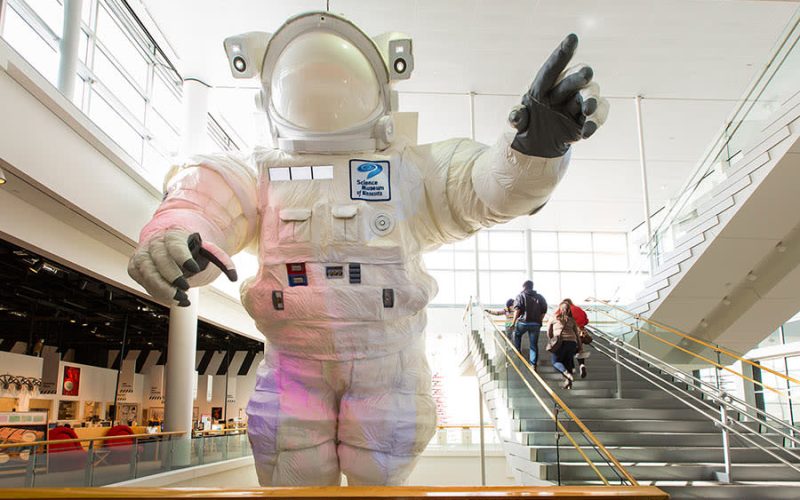
Science Museum of Minnesota
120 W. Kellogg Blvd.
Saint Paul, Minnesota 55102
United States
What unique situations and initiatives have you undertaken or do you plan to undertake to address climate change that were not captured in our initial survey?
The Science Museum of Minnesota adopted its first climate change statement in 2012, which is on display on the museum’s website with its other statements and on display in its lobby. The museum recently completed an updating of the statement that has much stronger language about the urgency to act, to acknowledge the need for climate justice and the importance of policy advocacy. The new statement has been approved by the museum’s executive committee of the board and full board ratification is expected by the end of March.
The Science Museum of Minnesota adopted carbon neutrality as an institutional goal in May 2019. It explicitly committed itself to cutting its 2019 carbon dioxide emissions by 50% by 2030 at the latest and to achieve carbon neutrality by 2050 at the latest. The Science Museum recently signed an agreement with Xcel Energy, its electricity provider, to receive 100% carbon-free electricity from the utility’s Windsource program. Electricity use constituted 59% of the museum’s carbon emissions in 2020 so this agreement will substantially reduce the museum’s carbon pollution. But the museum is not finished. Purchases of chilled and hot water from a district energy system comprise 24% of the museum’s carbon pollution and so attention now turns to pursuing opportunities to cut these emissions.
What are the most pressing problems or opportunities in your community that can be leveraged to address climate change?
The Science Museum of Minnesota’s Board of Trustees adopted a statement on equity and inclusion in March 2018. The museum recognizes that climate change disproportionately impacts communities of color, women, Indigenous groups, and people with limited wealth and with its new climate change statement will seek opportunities to leverage its equity and inclusion and climate change work with one another. The museum is committed to embracing climate justice and centering the needs of those most impacted by climate change, since most power lies in the hands of people who are likely to suffer the least.
What unique features of your garden can be leveraged to address climate change?
The Science Museum of Minnesota has a one-acre space that it is in the process of developing into an outdoor environmental innovation exhibit space. The museum is in discussions with a Minnesota-based company that has developed a novel way to use the earth to heat and cool buildings. The museum is eyeing its future Science Park as the site to demonstrate the utility of advanced aquifer heat transfer technology to its large audience of general public visitors, opinion leaders, policy makers and building professionals.
What unique restraining forces do your institution or community face that prevent you from addressing climate change effectively? How can you steer this meeting of forces away from compromise and toward reconciliation and harmony?
Too many people deflect from acting on climate change because they find it overwhelming. With our exhibitions, education programs, research and collections, leadership, policies, and practices, the Science Museum of Minnesota commits to being a resource on climate change and a hub for climate action. We will amplify collective solutions that ease the impacts of the climate crisis and that enable us all to imagine, design and realize a better future. With our mission as our guide, we will:
INSPIRE LEARNING by sharing data, evidence, and stories from diverse perspectives, especially those of Indigenous cultures.
INFORM POLICY by encouraging policymakers, businesses, and community leaders to make evidence-based decisions.
IMPROVE LIVES by embracing climate justice and centering the needs of those most impacted by climate change, since most power lies in the hands of people who are likely to suffer the least.





